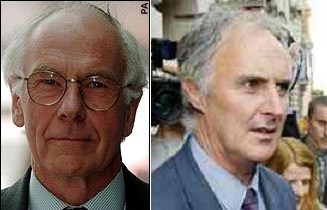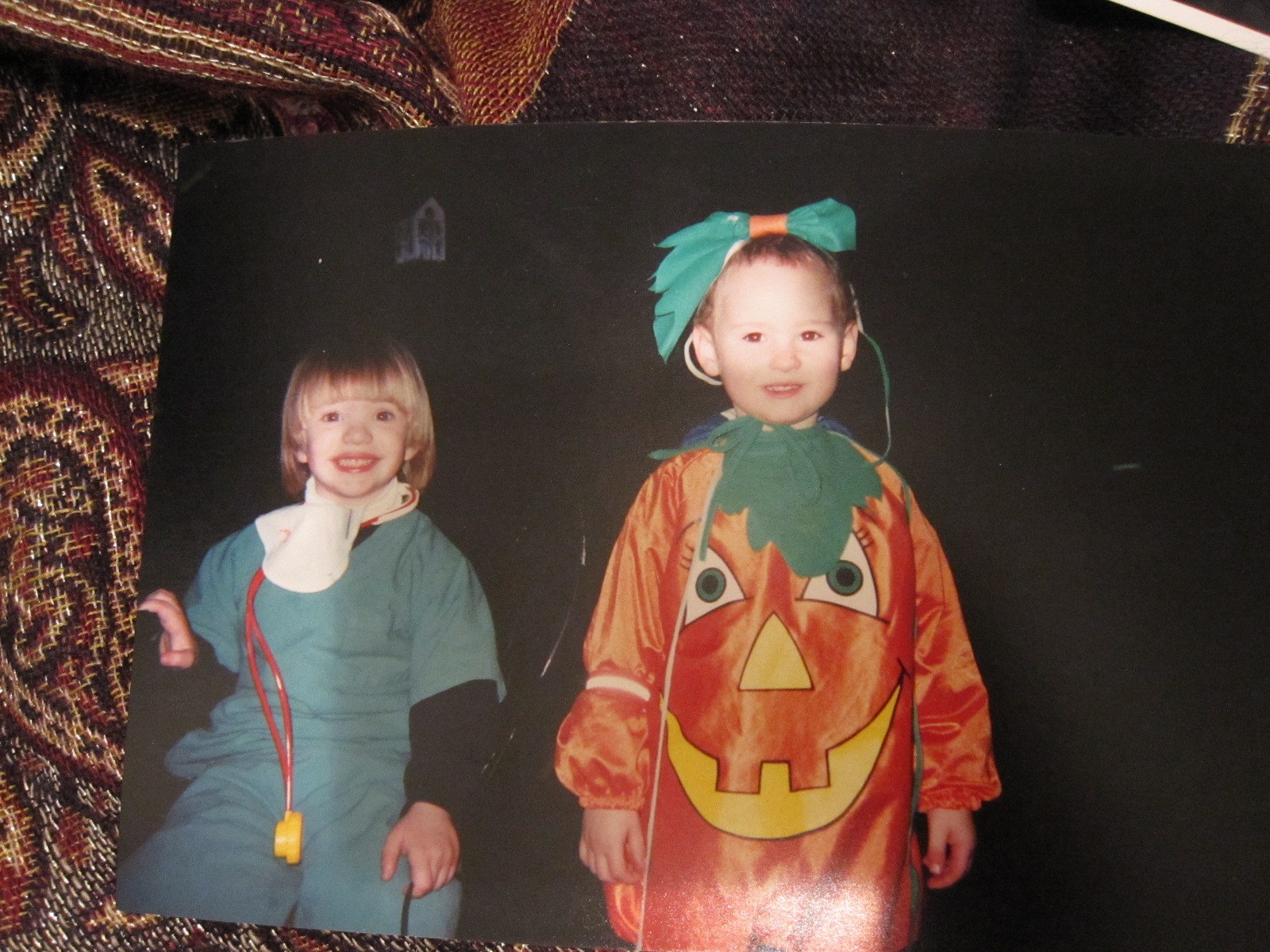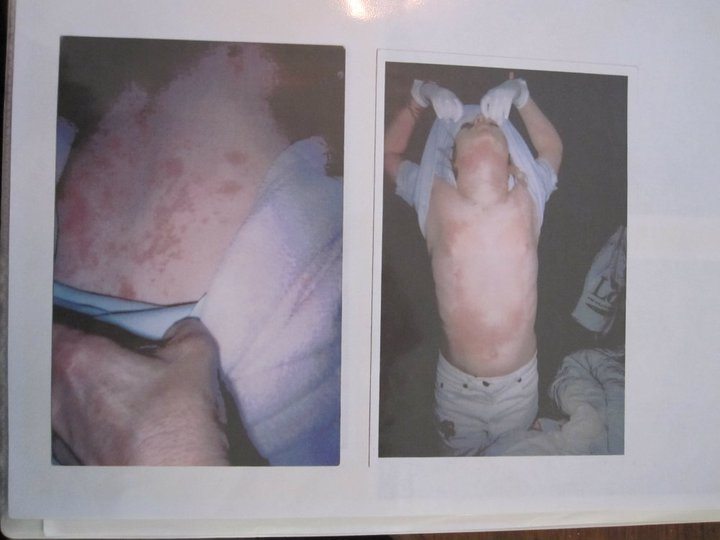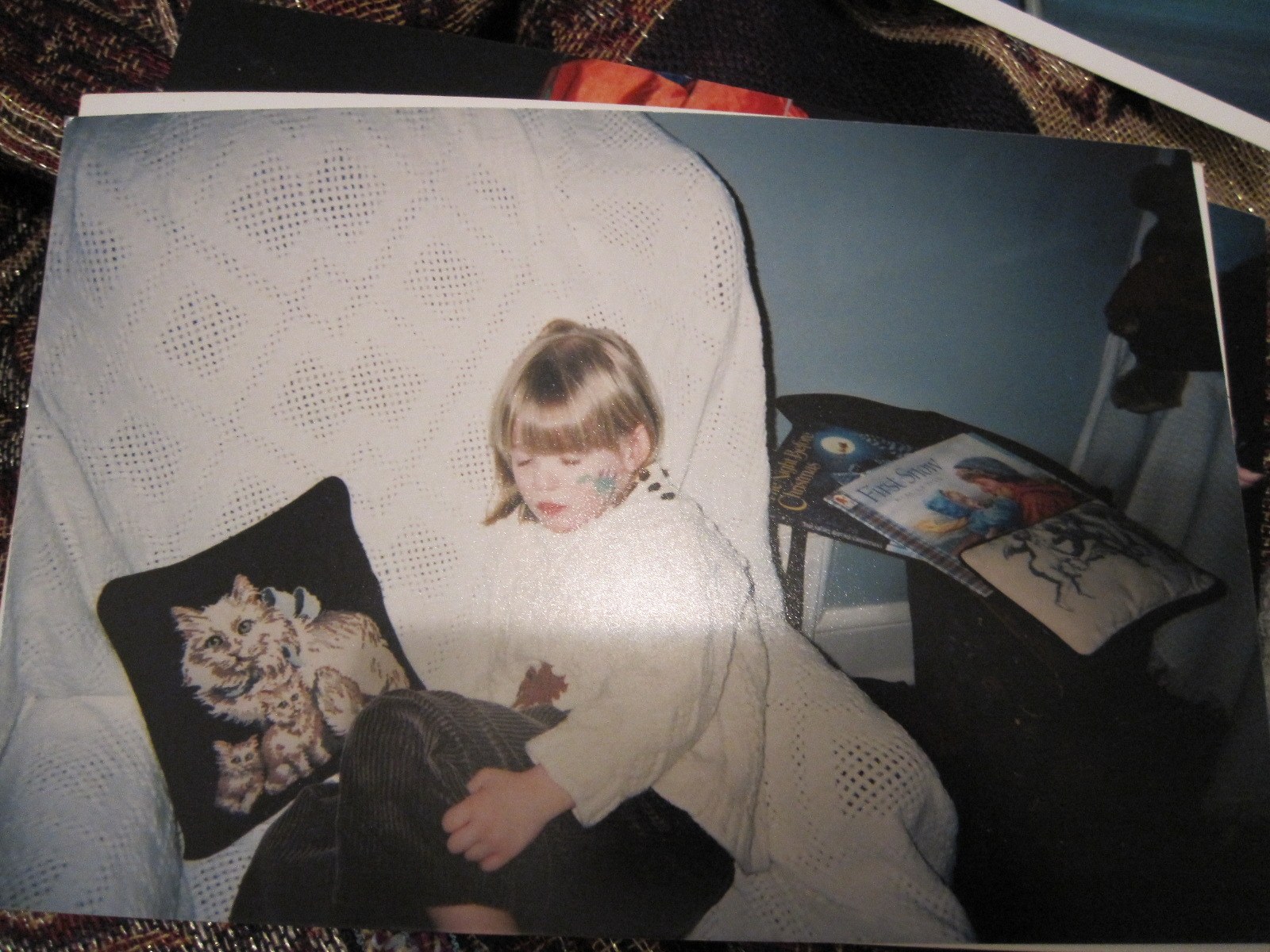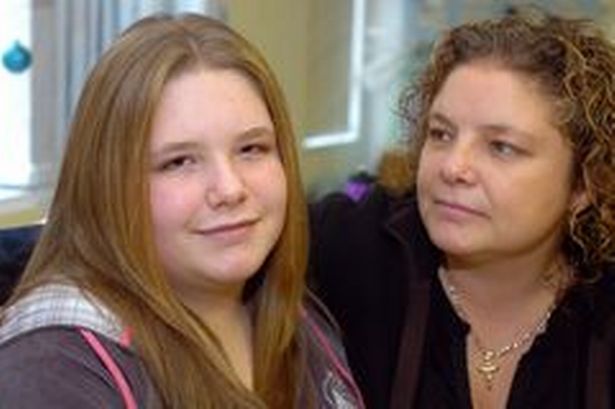
Professor David Southall facing the press in 2004 Photograph: Martin Rickett/EMPICS Sports Photo Agency. Source.
by Christina England
Health Impact News
In my first article titled Munchausen Syndrome by Proxy – A False Diagnosis to Blame Parents for Vaccine Injuries and Deaths, I described what Munchausen syndrome by proxy (MSBP) is, the man behind the label, Sir Roy Meadow, and his involvement in the Joint Committee of Vaccination and Immunization, an organization that sanctions vaccines in the UK.
From extensive research it appears that Sir Roy Meadow did not work alone. Another professional who has been found to be deeply embroiled in the vaccine injury cover-up, is a Professor David Southall.
Professor David Southall – A Brief Background
Professor David Southall, OBE (Order of the British Empire), is a UK pediatrician and an extremely controversial expert in the field of MSBP. Over the years he has performed significant research on Sudden Infant Death Syndrome (SIDS).
Prior to becoming a pediatrician, Professor Southall spent four years in general adult medicine, one year in obstetrics and two years as a general practitioner.
In 1987, he wrote a paper with V. Stebbens and E. A. Shinebourne, titled Sudden and unexpected death between 1 and 5 years. In an unusual move, he and his team recorded five cases of sudden infant death, whilst giving the children’s full vaccine status.
This particular paper identified that two of the children died very shortly after routine childhood vaccinations. All five children were being monitored as part of a large, population-based, non-intervention study into SIDS. It was noted that three of the five children suffered a cyanotic episode. (Cyanotic attacks are sometimes described as breath holding, apnea, or the child turning blue from lack of oxygen.)
A summary of the paper reads:
Of a population of 9856 children followed up from birth, 9251 of whom underwent 24 hour tape recordings of electrocardiograms and abdominal wall breathing movements during early infancy, five died suddenly and unexpectedly at home at ages ranging from 16 months to 4 years.
Postmortem examination, including full histological and microbiological investigations, failed to identify abnormalities ordinarily associated with death in all five cases. Two of the children were known to have had frequent cyanotic episodes and died during these events. In the three remaining cases there was no previous history of cyanotic or apnoeic episodes. The death of one of these three children was seen by his parents and the clinical features suggested that apnea rather than a cardiac arrhythmia was the primary mechanism for his death.
As in infancy, sudden and unexpected death for which no adequate cause is found at necropsy seems to constitute a major component of mortality between 1 and 5 years.
The paper continued by describing each case and their vaccine status at the time of death. Only one case had no reference to vaccines. From the quoted document, regarding Case 1, a child who died aged 4 years, Southall reported:
He was breast fed and fully immunised. Apart from minor respiratory tract illness, he was well until 4 years 4 months, when he died suddenly at home.
Case 2, child died at 18 months. Southall reported:
Two weeks later she was found cyanosed in her cot. Her mother went to wake her and found her lying still, deeply cyanosed, and sweating profusely. She was stimulated by her mother and slowly recovered consciousness.
During her journey to hospital in an ambulance, however, a further severe cyanotic episode occurred and she was given oxygen. This episode was accompanied by a loss of consciousness and convulsions. The morning of these episodes she had received a routine immunisation. (emphasis added)
This child died five days later. Southall reported:
Five days later, while awake and being carried to bed by her mother, a further cyanotic episode occurred. Her mother ran to a nearby house with the child and the neighbour attempted mouth to mouth resuscitation. The police and ambulance men arrived and also attempted resuscitation but without success. She was pronounced dead on arrival at the hospital.
As this little girl died five days after a routine vaccine, could it have been the vaccine that caused her to suffer the severe cyanotic episodes that led to convulsions?
The child in Case 3 died at 2 years, 10 months of age. Southall reported:
Although developmental assessments, including one performed a week before death, yielded normal results, a minimal right sided hemiparesis was identified at 2 years.
This was thought to have resulted from a particularly severe and prolonged episode of hypoxia that occurred at 18 months. At the time of this severe episode, she was resident for three days in the children’s ward to cover the time after a routine immunisation. (emphasis added)
There was no mention of vaccines in Case 4.
The Case 5 child died at age 16 months. Southall reported:
This boy, who died at 16 months, was the first child. His mother was aged 20 at his birth, which followed a pregnancy complicated only by maternal smoking (10 a day) and an allergic rash on the legs treated by chlorpheniramine for the last month of pregnancy. He was born at 40 weeks’ gestation, with a birth weight of 2700 g and an Apgar score of 10 at one minute. Up until the time of death, he was healthy, breast fed until 14 months, and fully immunised. (emphasis added)
It is clear that from his paper, that Professor Southall described the full case history of each child who died and in each case; he mentioned their vaccine status before their fatal attack.
While it is usual for pediatricians to mention vaccination status when writing a paper, it is unusual that this is the only paper that I have been able to find in which Professor Southall mentions a child’s vaccination status at time of death.
In 1990, J.B.P. Stephenson wrote a paper indicating that he had discussed vaccinations and sudden infant death syndrome with Professor Southall at a scientific meeting. His paper, titled Blue breath holding is benign, stated that Stephenson had spoken to Professor Southall regarding a paper that Southall, M. P. Samuels, and D. G. Talbert had written in the BMJ, titled Recurrent cyanotic episodes with severe arterial hypoxemia and intrapulmonary shunting: A mechanism for sudden death.
He wrote:
During a recent scientific meeting (Scottish Cot Death Trust SIDS Research meeting, Royal College of Physicians and Surgeons of Glasgow, 28 November 1990) Dr. David Southall agreed that the patients he was talking about had identical cyanotic episodes to those which I had recorded on videotape.
This videotape was of two typical breath holding spells in a 15 month old girl as illustrated in the figure. To make this meaningful to the clinical reader, the history is briefly summarised:
Breath holding spells began aged 7 months, five days after diphtheria, pertussis, and tetanus immunisation. (emphasis added)
Stephenson then went on to describe the child’s attack to Southall. Of course, Professor Southall may have been simply agreeing to the type of symptoms seen in Stephenson’s patient, but was he also agreeing to the fact that this child began evidencing symptoms after the vaccines?
Another interesting point to consider is this: Professor Southall’s paper Sudden and unexpected death between 1 and 5 years with fellow authors Stebbens and Shinebourne was written the same year as Professor Roy Meadow, an expert witness in MSBP, attended meetings with the Joint Committee for Vaccination and Immunisation at the Department of Health. Was it possible that Professor Meadow and Professor Southall were working together?
Were Professor Meadow and Professor Southall Working Together?
Professor Southall recorded several papers written by Meadow in his references in the paper Recurrent cyanotic episodes with severe arterial hypoxemia and intrapulmonary shunting: A mechanism for sudden death. This is of particular interest because the paper was written the same year as he was studying vaccination and SIDS. It was also the year that Meadow was attending meetings on adverse reactions to vaccination being a possible cause for crib/cot death, which is another name for SIDS. Were both these men brought in to provide the UK government with a cover for vaccine damage occurring in our children?
It is certainly a possibility, because psychologist Lisa Blakemore-Brown knows of families that say that one of these men accused them of MSBP after they had said that they believed that their child had suffered a vaccine injury. She said:
Many families whose children died of cot death, which is what Dr. Southall and Sir Roy Meadow focused on in their early careers, speak about the children having just had a vaccine.
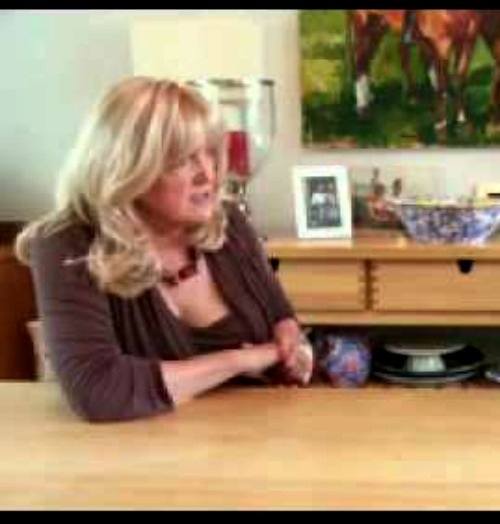
Lisa Blakemore-Brown
If this is so, then it is more than a mere coincidence that both men were later involved in one of the largest and most controversial cases in recent years, in which mother Sally Clark was jailed for the murder of two children who died shortly after a vaccination and in which two prosecution witnesses, including Professor Sir Roy Meadow, assured the jury that vaccinations could be discounted as a possible cause for the children’s deaths. (See Newspaper Report.)
Lisa Blakemore-Brown is an independent applied psychologist specialising in ADHD, Asperger’s Syndrome and related disorders. Her research focuses on early intensive system intervention and the increasing professional recognition of how the disorders interweave, causing what she calls a Tapestry Disorder.
Ms. Blakemore-Brown has always believed that parents come under attack and are blamed if they dare to question doctors, particularly if they believe that their child has become ill after a vaccination.
She has spoken worldwide on the subject since 1995/1996 and was the first professional ever to report the possible link between autism, MSBP and adverse reactions to vaccines.
Ms. Blakemore-Brown first became involved with parents she believed to be falsely accused of MSBP after she was introduced to, and asked to assess, twin girls whose mother had been accused. The paediatrician and expert leading the case was Professor David Southall, who was later found guilty of serious professional misconduct and abuse of position of power.
After spending many hours researching the twins’ background and studying the vast quantity of medical records pertaining to the case, Ms. Blakemore-Brown soon discovered that the girls had been born prematurely, at just 26 weeks and were severely disabled. Against all odds, the twins managed to survive even after they had both suffered multiple complications, including brain haemorrhages.
Ms. Blakemore-Brown diagnosed the twins with Autistic Spectrum Disorder and ADHD, saying that they were, in fact, very disabled little girls. Professor Southall and social services challenged her diagnosis, saying that they believed the twins to be normal.
Ms. Blackmore-Brown Appears in a Documentary
Professor Southall’s Confession
Professor Southall later admitted that he had no expertise in psychology or the condition ADHD during the TV3 20/20 New Zealand documentary titled Lies, Lies and Diagnosis.
See YouTube video below:
Years later, the reasons why he challenged Ms. Blakemore-Brown’s expert opinion with absolutely no authority to do so, slowly began to emerge. Despite this film featuring a UK case, it was extremely popular in New Zealand but never shown in the UK.
The case went to court and, despite the evidence supplied by Ms. Blakemore-Brown, the twin’s mother lost all four of her children to the care of social services.
Parents Are Still Being Accused After Vaccination Injuries Today
Case of False Accusations in Canada
Tess was born a healthy baby and became a healthy toddler. She was meeting all her milestones and her parents Michele and Barry were very proud of their beautiful daughter. However, in the summer of 2002, Tess’s health began to deteriorate. Tess, then aged six became very ill, she lost her speech and began to suddenly go downhill. She was not alone because her parents had also became very ill, suffering a combination of diarrhoea, vomiting, dizziness and burning to the throats.
According to Michele, it was not long before the whole family developed a severe cough and Tess developed a striking rash and began to have a series of seizures. Their illness was a complete mystery to doctors.
It wasn’t until a William A. Croft M.D., diagnosed arsenic poisoning that the mystery began to unravel. He told the family that they were suffering from acute and chronic arsenic exposure from the preservative that had been used to preserve their wood decking. As a matter of urgency the decking was condemned as a health hazard and subsequently removed.
However, the family’s problems did not end there.
Despite reports stating that:
Barry, Michele and Tess would need to undergo extensive hospital, medical surgical, therapeutic and pharmacological treatment,
things began to deteriorate and according to Michele she was falsely accused of MSBP.
The family’s complaints were clearly not made up or exaggerated as report after report described the same things. In 2008, a report stated:
Thyroid antibodies persist. Tess’s medical problems are all consistent with exposures to arsenic and chromium that occurred in the 2002 period.
Due to Tess’s allergies, Tess was exempt from receiving her vaccinations, however, she was vaccinated against her mother’s wishes with the MMR and straight away her problems increased.
Michele told us that:
She immediately deteriorated developing hives.
Tess began to lose eye contact and slowly her lovely smile faded.
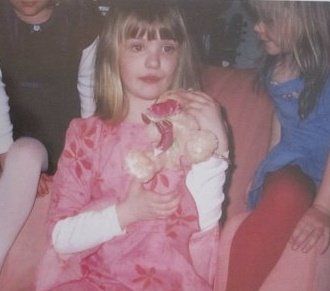
Tess after the MMR vaccine. Tess began to lose eye contact and slowly her lovely smile faded. Image provided by family.
Sadly, Tess was removed from the family home and taken into care and has remained there ever since. Doctors described Michelle as being very anxious and suffering from occasional depression.
It is difficult to say for certain whether or not it was the MMR that caused Tess to deteriorate, however, her mother has always been convinced that the vaccine was to blame. Michele feels that the whole family was treated very badly and she explained that she has since lost everything, including her home and her marriage and she has been left feeling devastated and angry.
Paralyzed After HPV Vaccine: Mother Labeled with MSBP
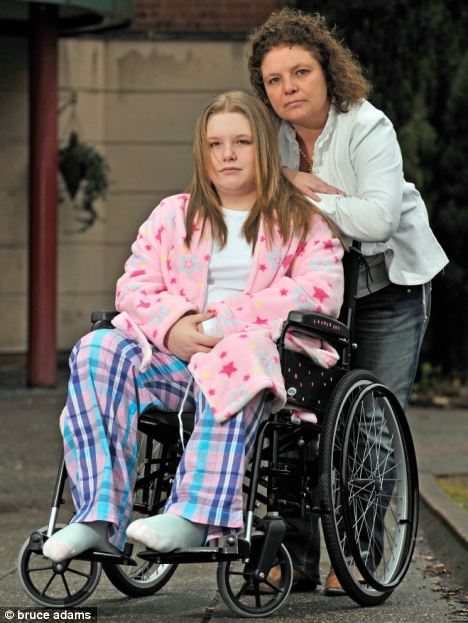
Ashleigh with her mom. In 2008, Ashleigh Cave became paralyzed after having just one shot of the GlaxoSmithKline HPV vaccine, Cervarix. Image provided by family.
In 2008, Ashleigh Cave became paralyzed after having just one shot of the GlaxoSmithKline HPV vaccine, Cervarix. For daring to disagree with the doctor who had stated that the vaccine could not have caused Ashleigh to become paralyzed, Ashleigh’s mother, Cheryl Cave was falsely accused of Munchausen’s syndrome by proxy.
On 6th September 2009, Mrs. Cave told Daniel Foggo who was reporting for The Times that:
A social worker said I should stop believing the injection has anything to do with Ashleigh’s condition because I am putting my thoughts on to her and stopping her getting well.
Ashleigh had become ill within a few minutes of receiving Cervarix. She suffered a severe migraine, weakness, nausea and dizziness. Within 48 hours she had collapsed 5 times and within 1 week she was unable to stand or walk. Ashleigh spent a total of two years in Alder Hey Hospital Liverpool, England, UK and on her release was left unable to walk without discomfort and the use of a frame. Today she stills suffers from excruciating pains in her legs and repeated infections.
Whilst in hospital she suffered one infection after another and nearly died when she developed flu like symptoms, a high temperature, peaking at 39.6 (103 F) and a heart rate of 160 beats per minute. According to her mother, she became so ill that her breathing appeared laboured and she was required to use a nebulizer. Ashleigh was left coughing up blood for two days and not only suffered a double kidney infection but a severe chest infection.
A second opinion, brought in by Alder Hey believed that Ashleigh’s symptoms were genuine.
Dr. Richard Ward Newton, from the Royal Manchester Children’s Hospital examined Ashleigh on the 13th March 2009 and wrote the following in his report:
By far the most likely explanation of Ashleigh’s illness is that initially she has an adverse event following vaccination.
He continued:
I think we can conclude that Ashleigh experienced the well documented short term adverse events of headache, myalgia and light-headedness (dizziness).
Dr. Newton referenced several studies from the Lancet and referred to papers mentioning adverse events following the HPV vaccination. In particular, he referenced the work of Dr. Diane Harper, a professional who had worked on the vaccination trials for both of the HPV vaccines.
Clearly, he believed that Ashleigh had suffered from adverse reactions to this vaccine and as we know there is no law stating just how long an adverse reaction can last.
He stated that:
Rehabilitation usually brings about good results although the fix is often not quick, particularly when the illness has gone on for five months or more.
However, should Ashleigh have ever had the vaccine in the first place? We ask this because Ashleigh suffers from Noonan’s syndrome, a blood clotting disorder causing frequent infections. She is also known to suffer from a mild heart problem and severe asthma.
According to the GlaxoSmithKline information leaflet for the vaccine it states:
Warnings and precautions
Talk to your doctor or pharmacist before you are given Cervarix
- If you have a bleeding problem or bruise easily
- If you have any disease which reduces your resistance to infection such as HIV infection
We need to ask ourselves whether the school is the right environment for children to have vaccines at all? How can school nurses be expected to be aware of every student’s full medical history and that of their family? It is an almost impossible task, especially as the average secondary school in the UK has around 2000 pupils or more.
Even if a school did have the full information for each child or was able to access their full medical data, would they check every child against the guidelines set out by the drugs companies?
It appears that this madness will never end.
To read the full horrors of the work of Professor David Southall and his involvement with UNICEF and banned vaccinations being used in developing countries, please read our latest book Vaccination Policy and the UK Government: The Untold Truth. UK Amazon and US Amazon.
Comment on this article at MedicalKidnap.com
See Also:




